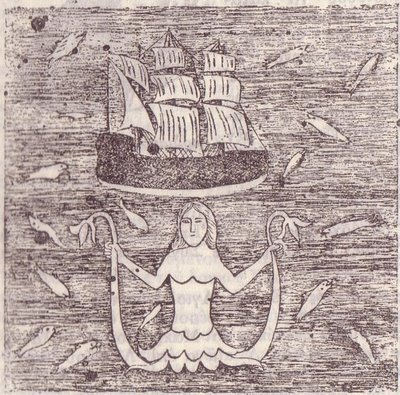
.
Στο φως θρησκεία πριν το Δωδεκάθεο
Πριν ο Δίας ρίξει... τον πρώτο του κεραυνό από τον Όλυμπο, οι αρχαίοι κάτοικοι της περιοχής φαίνεται πως λάτρευαν και πραγματοποιούσαν θυσίες στους δικούς τους θεούς και θεότητες, η ταυτότητα και η φύση των οποίων παραμένει άγνωστη ακόμη στους επιστήμονες.

Ανασκαφή στο τέμενος του Λυκαίου Διος
Ομάδα αρχαιολόγων βρήκε τις στάχτες, τα κόκκαλα και άλλα αποδεικτικά στοιχεία θυσιών ζώων σε κάποια θεότητα πριν τον Δία, στην κορυφή του όρους Λύκαιου στην Αρκαδία. Τα ευρήματα εντοπίστηκαν το περασμένο καλοκαίρι σε ένα βωμό που μετέπειτα λειτούργησε ως τόπος λατρείας του Δία.
Κομμάτια άχρωμων και χωρίς διακοσμήσεις κεραμικών αντικειμένων μαρτυρούν ότι αυτά προέρχονται από την εποχή πριν το 3.000 π.Χ., 900 δηλαδή χρόνια πριν την άφιξη των πρώτων ελληνόφωνων κατοίκων που ήλθαν από τα Βαλκάνια, φέρνοντας κατά πάσα πιθανότητα μαζί και τη θρησκεία τους.
Όπως μαρτυρούν τα ευρήματα στην περιοχή του Λύκαιου, η συνήθεια λατρείας κάποιας θεότητας στην περιοχή είναι πολύ παλιά και κατά πάσα πιθανότητα προηγείται χρονολογικά της εισαγωγής του Δία στην ελληνική πραγματικότητα. Όπως αναφέρει χαρακτηριστικά ο Δρ. Ντέιβιντ Ρομάνο του πανεπιστημίου της Πενσυλβάνια, «στην ουσία έχουμε, εκτός από την προ Χριστό εποχή, την προ Δία εποχή».
Τα ευρήματα στο όρος Λύκαιο παρουσιάστηκαν και συζητηθήκαν την περασμένη εβδομάδα από τον Δρ. Ρομάνο, την αρχαιολόγο του πανεπιστημίου της Αριζόνα, Δρ. Μαίρη Βογιατζή και τον Μιχάλη Πετρόπουλο, της Ελληνικής Αρχαιολογικής Υπηρεσίας.
Ανασκαφή στην περιοχή του ξενώνα
.
Αρχαιολόγοι που γνωρίζουν για την ανακάλυψη συμφωνούν με την εκδοχή του Δρ. Ρομάνο, αν και τόνισαν ότι οι ανασκαφές θα πρέπει να συνεχιστούν το καλοκαίρι ώστε να υπάρξει σαφέστερη κατανόηση της προ-Δία χρήσης του συγκεκριμένου βωμού στο Λύκαιο. «Τα στοιχεία που ήρθαν στο φως φανερώνουν σαφώς τη δραστηριότητα του βωμού στους προϊστορικούς χρόνους», ανέφερε ο Τζακ Ντέιβις, διευθυντής της αμερικανικής σχολής κλασσικών σπουδών της Αθήνας, που επισκέφθηκε την τοποθεσία αρκετές φορές. «Γνωρίζουμε ότι ο Δίας και μια θηλυκή εκδοχή του Δία λατρευόταν στα προϊστορικά χρόνια. Το δύσκολο ζήτημα είναι ο προσδιορισμός της ακριβούς φύσης του βωμού πριν από εκείνη την εποχή».
Ο Κεν Ντόουντεν, διευθυντής του Ινστιτούτου Αρχαιολογίας και Αρχαιοτήτων στο πανεπιστήμιο του Μπέρμιγχαμ, δήλωσε ότι δεν προκαλεί έκπληξη το γεγονός υιοθέτησης ενός υπάρχοντος βωμού για λατρεία από τους Έλληνες, κάτι που συνιστούσε εξάλλου συνήθη πρακτική που συναντάμε ακόμη και στους χριστιανικούς χρόνους.
Η συγκεκριμένη τοποθεσία λατρείας του Δία αναφέρεται και στα γραπτά του Παυσανία, ο οποίος έδωσε περιγραφές της τοποθεσίας. «Στο ψηλότερο σημείο του βουνού βρίσκεται ο βωμός του Λύκαιου Δία, από όπου φαίνεται ολόκληρη η Πελοπόννησος» αναφέρει ο Παυσανίας.
Οι επιστήμονες αρχαιολόγοι έδωσαν στη δημοσιότητα μερικά ακόμη στοιχεία για τη χρήση του βωμού πριν την εποχή του Δία. Σύμφωνα με τις προβλέψεις τους, είναι μάλλον απίθανο τα ευρήματα να μην προέρχονται από θρησκευτικές λατρείες και να αποτελούν οικιακά είδη κάποιου οικισμού, αφού το περιβάλλον είναι ιδιαίτερα αφιλόξενο και οι καιρικές συνθήκες που επικρατούν δυσμενείς. Σε ότι αφορά τους κατοίκους που ζούσαν εκεί πριν την έλευση των Ελλήνων δεν υπάρχουν ιδιαίτερα στοιχεία, αν και κάποιοι ακαδημαϊκοί πιστεύουν ότι προέρχονται από τη σημερινή δυτική Τουρκία. Τέλος, δεν έχει ακόμη προσδιοριστεί ο ακριβής τρόπος χρήσης του βωμού, αν δηλαδή χρησιμοποιούνταν σε συνδυασμό με τα έντονα καιρικά φαινόμενα για τη λατρεία κάποιας θεότητας ή την προσωποποίηση των δυνάμεων της φύσης.
www.kathimerini.gr με πληροφορίες New York Times
Ο Κεν Ντόουντεν, διευθυντής του Ινστιτούτου Αρχαιολογίας και Αρχαιοτήτων στο πανεπιστήμιο του Μπέρμιγχαμ, δήλωσε ότι δεν προκαλεί έκπληξη το γεγονός υιοθέτησης ενός υπάρχοντος βωμού για λατρεία από τους Έλληνες, κάτι που συνιστούσε εξάλλου συνήθη πρακτική που συναντάμε ακόμη και στους χριστιανικούς χρόνους.
Η συγκεκριμένη τοποθεσία λατρείας του Δία αναφέρεται και στα γραπτά του Παυσανία, ο οποίος έδωσε περιγραφές της τοποθεσίας. «Στο ψηλότερο σημείο του βουνού βρίσκεται ο βωμός του Λύκαιου Δία, από όπου φαίνεται ολόκληρη η Πελοπόννησος» αναφέρει ο Παυσανίας.
Οι επιστήμονες αρχαιολόγοι έδωσαν στη δημοσιότητα μερικά ακόμη στοιχεία για τη χρήση του βωμού πριν την εποχή του Δία. Σύμφωνα με τις προβλέψεις τους, είναι μάλλον απίθανο τα ευρήματα να μην προέρχονται από θρησκευτικές λατρείες και να αποτελούν οικιακά είδη κάποιου οικισμού, αφού το περιβάλλον είναι ιδιαίτερα αφιλόξενο και οι καιρικές συνθήκες που επικρατούν δυσμενείς. Σε ότι αφορά τους κατοίκους που ζούσαν εκεί πριν την έλευση των Ελλήνων δεν υπάρχουν ιδιαίτερα στοιχεία, αν και κάποιοι ακαδημαϊκοί πιστεύουν ότι προέρχονται από τη σημερινή δυτική Τουρκία. Τέλος, δεν έχει ακόμη προσδιοριστεί ο ακριβής τρόπος χρήσης του βωμού, αν δηλαδή χρησιμοποιούνταν σε συνδυασμό με τα έντονα καιρικά φαινόμενα για τη λατρεία κάποιας θεότητας ή την προσωποποίηση των δυνάμεων της φύσης.
www.kathimerini.gr με πληροφορίες New York Times
.
.
An Altar Beyond Olympus for a Deity Predating Zeus
By JOHN NOBLE WILFORD
By JOHN NOBLE WILFORD
Published: February 5, 2008
.
.
PHILADELPHIA — Before Zeus hurled his first thunderbolt from Olympus, the pre-Greek people occupying the land presumably paid homage and offered sacrifices to their own gods and goddesses, whose nature and identities are unknown to scholars today.
But archaeologists say they have now found the ashes, bones and other evidence of animal sacrifices to some pre-Zeus deity on the summit of Mount Lykaion, in the region of Greece known as Arcadia. The remains were uncovered last summer at an altar later devoted to Zeus.
Fragments of a coarse, undecorated pottery in the debris indicated that the sacrifices might have been made as early as 3000 B.C., the archaeologists concluded. That was about 900 years before Greek-speaking people arrived, probably from the north in the Balkans, and brought their religion with them.
But archaeologists say they have now found the ashes, bones and other evidence of animal sacrifices to some pre-Zeus deity on the summit of Mount Lykaion, in the region of Greece known as Arcadia. The remains were uncovered last summer at an altar later devoted to Zeus.
Fragments of a coarse, undecorated pottery in the debris indicated that the sacrifices might have been made as early as 3000 B.C., the archaeologists concluded. That was about 900 years before Greek-speaking people arrived, probably from the north in the Balkans, and brought their religion with them.
.

MYSTERY RELIGION From left, Dan Diffendale, Dr. Arthur Rhon and Arvey Basa at Mount Lykaion’s altar of Zeus
The excavators were astonished. They were digging in a sanctuary to Zeus, in Greek mythology the father of gods and goddesses. From texts in Linear B, an ancient form of Greek writing, Zeus is attested as a pre-eminent god as early as 1400 B.C. By some accounts, the birthplace of Zeus was on the heights of Lykaion.
After reviewing the findings of pottery experts, geologists and other archaeologists, David Gilman Romano of the University of Pennsylvania concluded that material at the Lykaion altar “suggests that the tradition of devotion to some divinity on that spot is very ancient” and “very likely predates the introduction of Zeus in the Greek world.”
As Dr. Romano remarked, quoting a quip by a friend, “We went from B.C. to B.Z., before Zeus.”
The discovery by the Mount Lykaion Excavation and Survey Project was described last week in interviews and a lecture by Dr. Romano at the Museum of Archaeology and Anthropology at Penn. Mary E. Voyatzis, a project co-director from the University of Arizona, discussed her analysis of the telltale pottery. The project’s third co-director is Michaelis Petropoulos of the Greek Archaeological Service.
Other archaeologists familiar with the discovery tended to agree with Dr. Romano’s interpretation, though they said that continuing excavations this summer and next should reach a more definitive understanding of the altar’s possible pre-Greek use.
“Evidence uncovered certainly points to activity at the altar in prehistoric times,” said Jack Davis, director of the American School of Classical Studies at Athens, who visited the site several times. The project was conducted under the auspices of the American school, but he was not a participant.
“We certainly know that Zeus and a female version of Zeus were worshiped in prehistoric times,” Dr. Davis continued in an e-mail message. “The trick will be in defining the precise nature of the site itself before historical times.”
Ken Dowden, director of the Institute of Archaeology and Antiquity at the University of Birmingham, in England, who was not involved in the research, said that it was not surprising to find the migrating Greeks adapting a sanctuary dedicated to gods of an earlier religion for the worship of their own gods. “Even Christians would on occasion reuse a pagan sanctuary in order to transfer allegiance from the preceding religion to Christianity,” he noted.
“You have some god being worshiped on a mountaintop, and the arriving Greeks have translated the god as ‘Zeus,’ their god of the sky, lightning, weather and so on,” Dr. Dowden said. “It’s going to be pretty close to what they found there, and given the site, it makes very good sense.”
The affinities of Roman gods and goddesses to earlier Greek ones are well known. Jupiter, for example, is a virtual stand-in for Zeus. In antiquity it was perhaps no heresy to have different names for the same deity. The place of Mount Lykaion in practices venerating Zeus is documented in literature and previous archaeological research.
The Greek traveler Pausanias, writing in the second century A.D., described the sanctuary of Zeus on the mountain, 4,500 feet above the rural countryside.
“On the highest point of the mountain is a mound of earth, forming an altar of Zeus Lykaios, and from it most of the Peloponnesus can be seen,” Pausanias wrote. “Before the altar on the east stand two pillars, on which there were once gilded eagles. On this altar they sacrifice in secret to Lykaion Zeus. I was reluctant to pry into the details of the sacrifice; let them be as they are and were from the beginning.”

LONG LOST Silver coin, circa 430 B.C., found in the altar trench at Mount Lykaion in Arcadia. It depicts Artemis or Despoina
.
In “Prolegomena to the Study of Greek Religion,” Jane Ellen Harrison, a British scholar, wrote in 1903, “The Zeus of Homer demanded and received the titbits of the victim, though even these in token of friendly communion were shared by the worshipers.”
The proximity of Mount Lykaion to Olympia, 22 miles northwest, initially attracted Dr. Romano’s attention. Another sanctuary of Zeus, Olympia was a prominent site of the Pan-Hellenic athletic competitions after which current Olympic Games are modeled, and Dr. Romano is an authority on these ancient festivals of sports. His colleagues point out that he is the only archaeologist they know to have a master’s degree in physical education.
At Lykaion, Dr. Romano began excavations of the hippodrome on a high meadow, where Greek athletes competed in horse and chariot races and other sports. Not far above, on the southern summit, meanwhile, the research team mapped the altar site and dug a test trench, under the direction of Arthur Rhon, emeritus professor of anthropology at Wichita State University.
Bones, mostly goats and sheep, were collected. A few bronze artifacts were recovered. Also a seal stone with an image of a bull, suggesting influence at one time from Minoan Crete. Altar stones were burned and cracked from the sacrificial fires.

Potsherds from the pre-Greek civilization that worshiped an unknown deity there
The proximity of Mount Lykaion to Olympia, 22 miles northwest, initially attracted Dr. Romano’s attention. Another sanctuary of Zeus, Olympia was a prominent site of the Pan-Hellenic athletic competitions after which current Olympic Games are modeled, and Dr. Romano is an authority on these ancient festivals of sports. His colleagues point out that he is the only archaeologist they know to have a master’s degree in physical education.
At Lykaion, Dr. Romano began excavations of the hippodrome on a high meadow, where Greek athletes competed in horse and chariot races and other sports. Not far above, on the southern summit, meanwhile, the research team mapped the altar site and dug a test trench, under the direction of Arthur Rhon, emeritus professor of anthropology at Wichita State University.
Bones, mostly goats and sheep, were collected. A few bronze artifacts were recovered. Also a seal stone with an image of a bull, suggesting influence at one time from Minoan Crete. Altar stones were burned and cracked from the sacrificial fires.

Potsherds from the pre-Greek civilization that worshiped an unknown deity there
.
A geological survey by George Davis of the University of Arizona revealed an ancient fault bordering the altar site on three sides. Could this fault be related to the selection of the site? The region is prone to earthquakes.
Dr. Voyatzis said the potsherds were the most telling finds. Their undecorated style, gray color, the feel of the clay and the way it was fired, she said, were diagnostic of pottery 5,000 years ago. “You wouldn’t establish a settlement in a stark, fearful place like this,” Dr. Voyatzis said in an interview while visiting Penn. So the pottery, she added, was presumably there as part of ceremonies at the altar.
Like Dr. Voyatzis, Gullog Nordquist of Uppsala University in Sweden was troubled by the jumbled nature of the potsherds in the trench. She said it “raises questions of exactly how it came to be there.”
In an e-mail message last week, Dr. Nordquist, who has visited the site but was not a team member, said that the potsherds “may have belonged to vessels found in graves by people in later times and given to the gods as offerings.” Or they could be remains from an early Bronze Age settlement, although she, too, said “it would be a very inconvenient place to live.”
Dr. Nordquist said that she preferred the explanation that the Lykaion site was indeed used as a cult sanctuary in the time before Zeus. Little is known of the pre-Greek inhabitants, but some scholars think they originated in what is now western Turkey.
“We do not yet know exactly how the altar was first used in this early period, 3000-2000 B.C., or whether it was used in connection with natural phenomena such as wind, rain, lightning or earthquakes, possibly to worship some kind of divinity, male or female, or a personification representing forces of nature,” Dr. Romano said. “But this is what we are thinking at this moment.”
Dr. Voyatzis said the potsherds were the most telling finds. Their undecorated style, gray color, the feel of the clay and the way it was fired, she said, were diagnostic of pottery 5,000 years ago. “You wouldn’t establish a settlement in a stark, fearful place like this,” Dr. Voyatzis said in an interview while visiting Penn. So the pottery, she added, was presumably there as part of ceremonies at the altar.
Like Dr. Voyatzis, Gullog Nordquist of Uppsala University in Sweden was troubled by the jumbled nature of the potsherds in the trench. She said it “raises questions of exactly how it came to be there.”
In an e-mail message last week, Dr. Nordquist, who has visited the site but was not a team member, said that the potsherds “may have belonged to vessels found in graves by people in later times and given to the gods as offerings.” Or they could be remains from an early Bronze Age settlement, although she, too, said “it would be a very inconvenient place to live.”
Dr. Nordquist said that she preferred the explanation that the Lykaion site was indeed used as a cult sanctuary in the time before Zeus. Little is known of the pre-Greek inhabitants, but some scholars think they originated in what is now western Turkey.
“We do not yet know exactly how the altar was first used in this early period, 3000-2000 B.C., or whether it was used in connection with natural phenomena such as wind, rain, lightning or earthquakes, possibly to worship some kind of divinity, male or female, or a personification representing forces of nature,” Dr. Romano said. “But this is what we are thinking at this moment.”
























































2 σχόλια:
Πολύ καλό το Blog σου.
Ωραία δομημένο, πολύ ενδιαφέροντα θέματα. Μέσα από την ιστορία του χωριού σου ξετυλίγετε η ιστορία όλων των χωριών της πεδινής Ηλείας.
Όλοι σχεδόν έχουμε ρίζες σε κάποιο χωριό της Αρκαδίας.
Ευχαριστώ γιά την προσθήκη του blog μου στα Link σου.
Θα χαρώ να τα πούμε από κοντά.
Ολύμπιος.
Κι εγώ ευχαριστώ. Με την πρώτη ευκαιρία θα τα πούμε από κοντά. Να είσαι καλά!
Δημοσίευση σχολίου